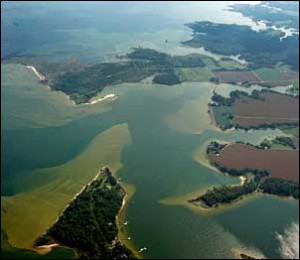by Carol J. Bova
The U.S. 3rd Circuit Court of Appeals upheld the Environmental Protection Agency’s authority to set limits on the amount of pollution and sediment reaching the Chesapeake Bay through TMDLs, Total Maximum Daily Loads. TMDL plans are sometimes referred to as a “pollution diet.” The 3-judge panel said, “The Chesapeake Bay TMDL will require sacrifice by many, but that is a consequence of the tremendous effort it will take to restore health to the Bay….” (Opinion of the Court, Case No, 13-4079, July 6, 2015.)
The ruling and the legal arguments, for and against, failed to recognize that TMDL pollution limits alone cannot restore the health of the Chesapeake Bay or of the streams, rivers and smaller bays connecting to it.
Virginia’s Attorney General Mark R. Herring said in his July 6 news release, “The most promising plan for Bay restoration was under attack from out of state special interests and I couldn’t let that go unanswered.” But the Attorney General isn’t acknowledging that TMDL plans are only part of the answer and can’t restore the Bay.
TMDLs are determined from computer models. Existing levels of pollutants in the waterways are determined through monitoring. Pollutant levels above the maximum the waters can tolerate without exceeding water quality standards are divided among the potential sources. Those sources must then attempt to meet the reduction targets.
Sounds simple and straightforward, but computer models are only as good as the information input into them. At best, they’re a reasonable estimate. At worst, they attribute the pollution to the wrong sources, or in the wrong quantities, or miss factors related to damaged ecosystems, factors like stream flow.
Stream flow is akin to a Goldilocks story with too much, too little or just right rates. A natural rate of flow is the just right part. Flow that’s too fast, as in the well-known and litigated Accotink Creek situation, scours too much material from stream banks and the streambed and deposits that sediment downstream. (Virginia’s former Attorney General won that case against the EPA for the Virginia Department of Transportation (VDOT), with the court ruling the EPA can regulate pollutants like sediment, but not conditions like stream flow rate that erode and move sediment downstream where it causes a problem.)
VDOT also creates the opposite condition, too little flow in streams that must cross under state roads or pass through state roadside ditches and culverts to reach receiving waters. This slowing or obstruction causes a different kind of sediment problem, one that results from lack of dissolved oxygen in the water. Impounded rainwater or streams lose oxygen. Without oxygen, beneficial bacteria that decompose dead plant matter die off. Partially decomposed matter accumulates, further blocking flow. This mucky sediment smothers aquatic plants and bottom-dwelling invertebrates, forces upstream water to back up, and deprives downstream waters of the dissolved oxygen every living thing in the Bay needs.
In Mathews County, the first hard-surfaced road the Commonwealth built interfered with stream flow in 1926-28—and still does there and across the county today. As the Accotink Creek case shows, VDOT impacts stream flow in other counties too.
The EPA can’t force VDOT to correct damaging stream flow conditions. DEQ (the Virginia Department of Environmental Quality) can only issue new VDOT permits and has no enforcement power over prior VDOT stream impairments. The Attorney General’s office provides for the legal needs of state agencies, including protecting them from the consequences of prior bad decisions and practices.
Farmers and private citizens can observe TMDLs to the letter, but that won’t fix VDOT’s impacts and let streams flow without carrying excessive sediment or allow obstructed streams to deliver life-giving oxygen to truly restore the Bay. Article XI of the Virginia Constitution says, “…it shall be the Commonwealth’s policy to protect its atmosphere, lands, and waters from pollution, impairment, or destruction.”
So, Attorney General Herring, if you believe in restoring the Chesapeake Bay, can you advise us how the Commonwealth is going to address VDOT’s impacts?
Carol Bova is author of “Drowning a County,” a book documenting VDOT’s neglect of its roadside drainage ditches in Mathews County.



